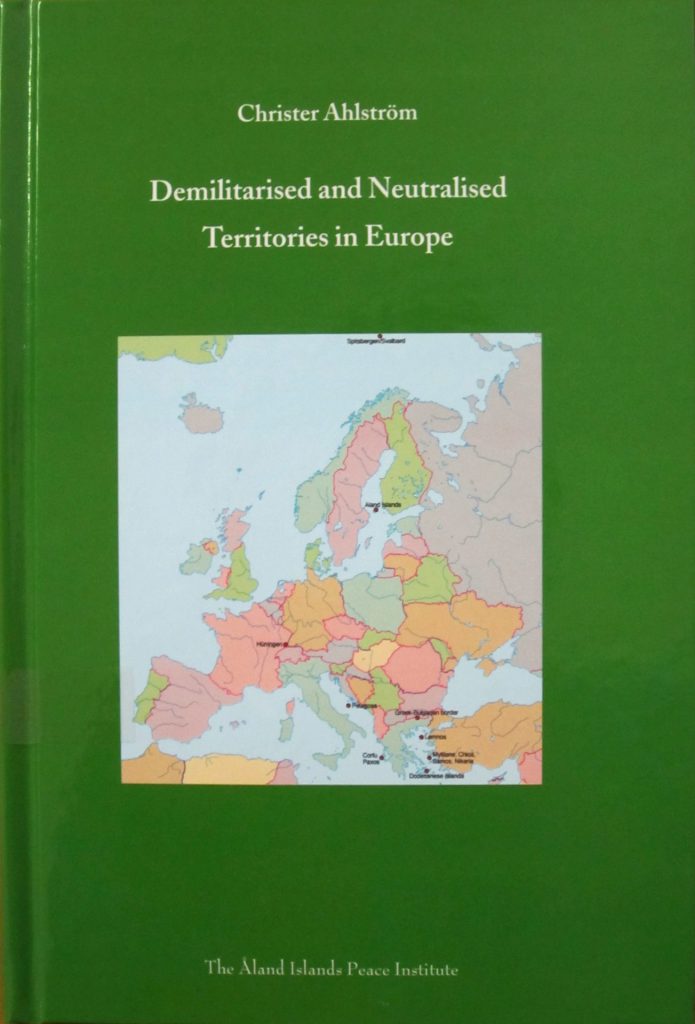Författare/Authors
Redaktörer/Editors

Den här publikationen finns på svenska och engelska. This book looks a geographical areas in Europe that are or have been demilitarised or neutralised. The author begins by discussing the concepts of demilitarisation and neutralisation from the perspective of international law. Tis is followed by a survey of demilitarised and neutralised territories past and present, with an emphasis on Europe. The available source material largely consists of peace treaties, but the author also draws on a number of general studies. Interest from academics in the institutions of demilitarisation and neutralisation seems to have diminished since 1945. One significant exception is the Åland Islands, whose status under international law and autonomous government have attracted considerable attention, particularily among Nordic researchers. In a concluding section the author discusses a number of legal issues relating to demilitarisation and neutralisation in the light of European state practice.
This book looks a geographical areas in Europe that are or have been demilitarised or neutralised. The author begins by discussing the concepts of demilitarisation and neutralisation from the perspective of international law. Tis is followed by a survey of demilitarised and neutralised territories past and present, with an emphasis on Europe. The available source material largely consists of peace treaties, but the author also draws on a number of general studies. Interest from academics in the institutions of demilitarisation and neutralisation seems to have diminished since 1945. One significant exception is the Åland Islands, whose status under international law and autonomous government have attracted considerable attention, particularily among Nordic researchers. In a concluding section the author discusses a number of legal issues relating to demilitarisation and neutralisation in the light of European state practice.


